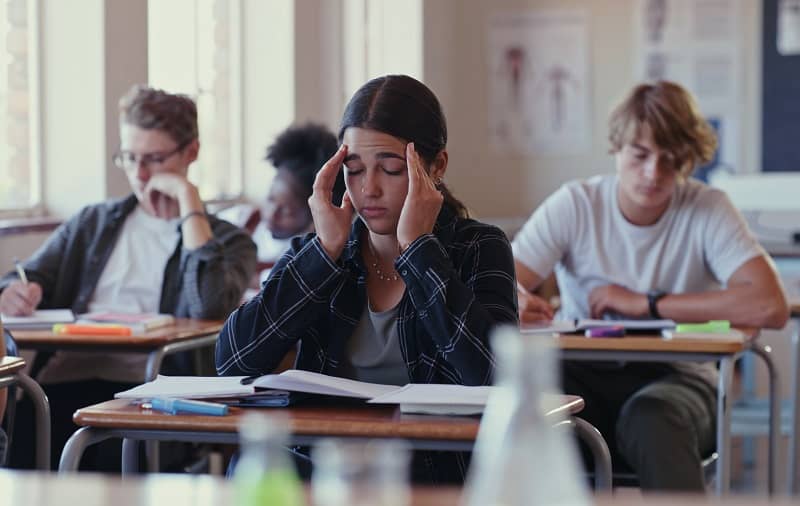Summary: A recent U.S. Supreme Court case requiring a school district to reimburse parents of a disabled child for education expenses widens the gap between the legal rights of disabled children and non-disabled children. In contrast, education tax credits or vouchers could provide every child with an education that meets his or her individual needs.
Do disabled children in Oregon have more legal rights to a solid education than students who are not disabled? A recent U.S. Supreme Court interpretation of the federal Individuals with Disabilities Education Act (IDEA)[i] indicates that they do.
In a recent case arising out of Oregon’s Forest Grove School District, parents of a struggling high school boy asked the school district to evaluate their son for learning disabilities.[ii] The school district failed to diagnose the boy with a disability. Subsequently, a private specialist diagnosed him with ADHD and other learning and memory disabilities and recommended that he would do better in a different learning environment. The parents took the advice, and enrolled their son in an expensive private academy that addressed his special needs. Then they sued the school district for reimbursement for the private school expenses (of $6,400 per month) and won.
While this may sound shocking at first, it is actually a small step from prior established law. Under the IDEA, states that accept certain federal education funding must provide disabled students with a “free and appropriate public education.”[iii] The IDEA requires that schools identify disabled children and provide them with an Individual Education Plan. A previous Supreme Court ruling from 1985 requires a school to reimburse parents for the costs of a private education when the school fails to provide the “free and appropriate public education.”[iv] In this recent Forest Grove case, the Supreme Court has simply affirmed that this rule still applies in spite of an ambiguous 1997 amendment to the statute. The Court ruled that the school must reimburse parents even if the child had not “previously received special education and related services” from a public school.[v]
This case brings up some other interesting issues. To have the statute’s guarantee of a “free and appropriate public education,” a child must have a disability. So what happens when a child has difficulty learning because of her unique needs, but her needs do not qualify her as “disabled”? When does trouble learning become a disability? How fuzzy is that line?
The line is very fuzzy. For example, experts debate the proper method for diagnosing learning disabilities, or whether such labels have any useful meaning, when every child has a unique learning style and pace. The IDEA itself recognizes the difficulty of diagnosing a disability and requires the school to use more than one method.[vi] This fuzziness has disturbing implications.
Imagine a student, Ana, from a low-income family. Ana has trouble learning and is struggling at her public school and would do much better with a more hands-on curriculum, but she is not classified as disabled and qualifying for the accompanying protections. At the same time, her friend Ben, from a wealthy family, is diagnosed with a learning disability. The school fails to provide Ben with an “appropriate” education and must pay for Ben to attend a special school that caters to his need. Ana is stuck in her same learning situation that does not work for her unique needs, without a way out. Yet Ben’s family (who could afford private school anyway) is able to choose a school that works with his needs, on the district’s dime.
It is inequitable to arbitrarily entitle only a portion of students to a free and appropriate education. It makes sense in our current structure that we require school districts to pay for a disabled child’s private education when the public school failed his needs because it provides accountability. A parent can threaten to place her disabled child in private school at the district’s expense when the child is slipping through the cracks. However, it is crazy to entitle one child to a free $65,000 per year private education, while denying another child the right to an education at a more typical private elementary school that could even cost less than one at her public school. Why should the government choose winners and losers? Why not, instead, allow parents an equal opportunity to find a winning fit for their children?
Education tax credits or vouchers could provide greater opportunity to every child to get an education that meets their individual needs. While they would not cover a $65,000 education, they would go a long way toward empowering parents to find the school that best fits their children’s needs.
In Oregon, this could work particularly well, since the average private school tuition is actually less than what we pay per student in the public system. In Oregon, vouchers are probably unconstitutional. However, tax credits for K-12 education expenses or for donations to scholarship programs for low-income children could empower every parent to find an appropriate education for his or her child’s distinctive needs, public or private. This would improve education outcomes for our state, improving test scores and the graduation rate, according to the highest quality research studies.
Arbitrary lines like those created by the IDEA are infuriatingly unfair. A disabled child is neither more nor less deserving of an appropriate education than a non-disabled child. With such a beautiful variety of schools in Oregon, we should empower each parent to choose the right one for his or her child, rather than delegating that power to the public school district.
[i] 84 Stat. 175, as amended, 20 U.S.C. §1400, et seq.
[ii]Forest Grove School Dist. v. T.A., 557 U.S. __ (2009).
[iii] 20 U.S.C. §1412(a)(1)(A).
[iv] School Comm. of Burlington v. Department of Ed. of Mass., 471 U.S. 359, 370 (1985).
[v] Forest Grove, 557 U.S. __ (2009), interpreting §1412(a)(10)(C)(ii).
[vi] 20 USC 1414(b)(2) requires a school district to “use a variety of assessment tools and strategies to gather relevant functional, developmental, and academic information, including information provided by the parent, that may assist in determining- (i) whether the child is a child with a disability.” Likewise, a school district may “not use any single measure or assessment as the sole criterion for determining whether a child is a child with a disability or determining an appropriate educational program for the child.” Also see Special Education: A Guide for Parents & Advocates by Disability Rights Oregon, available at http://www.disabilityrightsoregon.org/resources/5-publications-1/Special-Education-Guide-2008.pdf/view.











